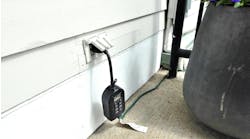“Hazard elimination shall be the first priority in the implementation of safety-related work practices.” So begins NFPA 70E, Art. 110 in the 2021 revision. This is a very powerful statement that, in only a few words, provides the rationale behind much of what follows.
If you had never heard of NFPA 70E, never had any safety training, and did not have safety procedures but still had this one concept and took it seriously, how safe would you be? You would be far safer than someone who has the other three but does not internalize this concept.
Think of a jigsaw. Twenty years ago, you had to run a portable cord to be able to use the saw to cut those dozens of drywall holes in the commercial office space you were wiring. Without good cord management, you had a tripping hazard.
Along came battery-powered jigsaws with sufficient battery to be useful on the job. Using this tool, you eliminate that tripping hazard. The problem now is the silica dust from the saw. So you wear a suitable fiber respirator. But it clogs up and has to be replaced often. Plus you get dust in your eyes and all over your clothes.
Along came battery-powered jigsaws with dust collectors. Using this tool, you eliminate yet another hazard.
Why do we perform lockout/tagout (LOTO)? To eliminate a hazard. If you read through Art. 130, Work Involving Electrical Hazards, you will find many more examples.
Now, suppose you encounter a hazard you have not seen before. Is your first priority to obtain the correct PPE? No, your first priority is to eliminate that hazard. If you cannot immediately see how to eliminate the hazard, that does not mean you should find a way to accommodate it. Because it is your first priority, finding a way to eliminate it is worth some extra effort.
Review the system drawings and any other documentation for that system or equipment. Ask the operators, the system engineer, your supervisor, and anyone else who may provide some insight. If the system can’t be shut down, perhaps it can be temporarily bypassed. Or perhaps it can be shut down later so you can work on it with several hazards eliminated.
In some cases, a hazard elimination method is identified but cannot be implemented in time for this particular job. For example, infrared thermography is conducted on the same switchgear annually. There’s no infrared window to eliminate cover removal. That can be scheduled for installation during the next shutdown, thereby eliminating a hazard for the next time this job is performed.




